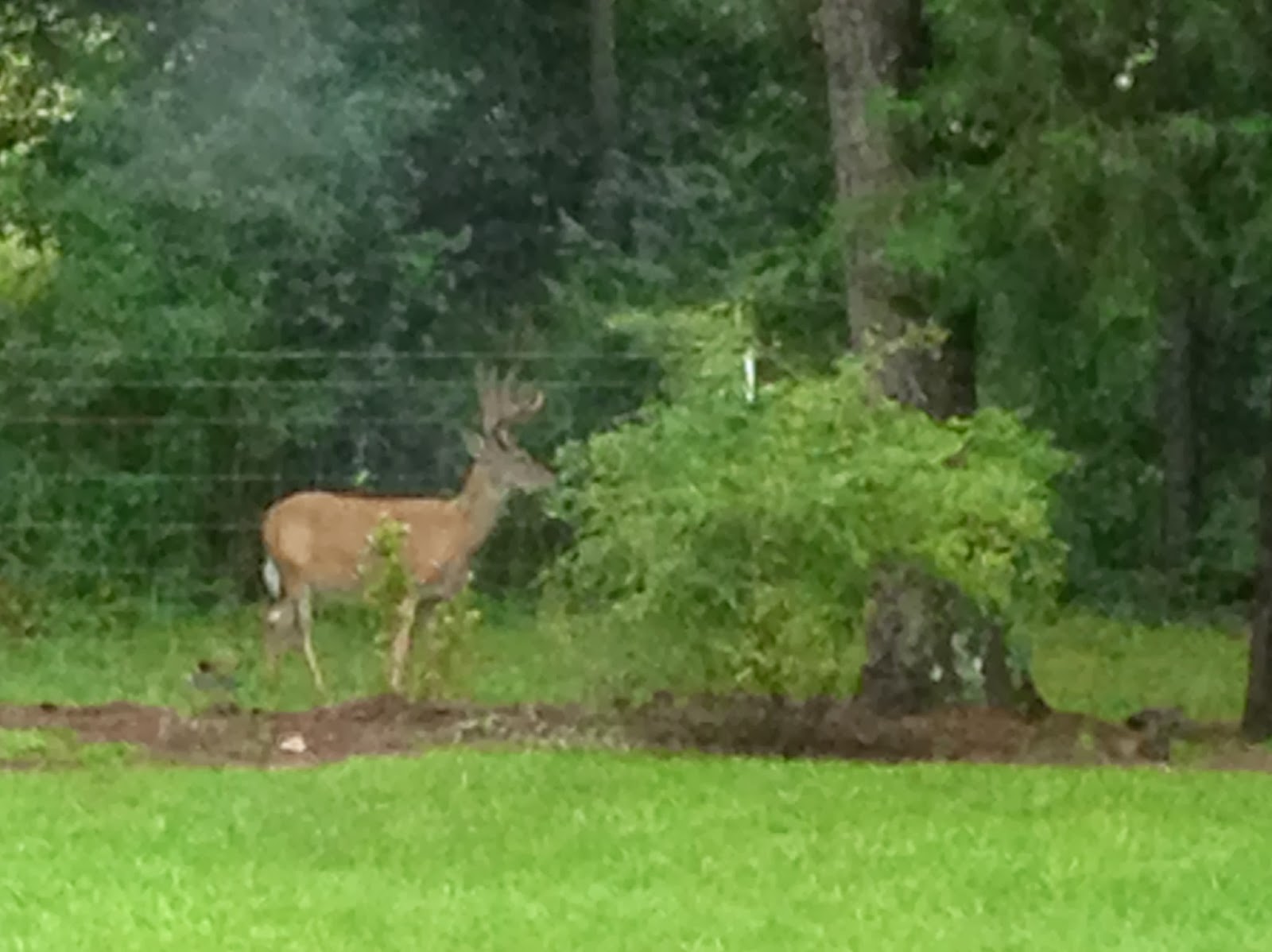 |
| Azaleas are a favorite snack for Deer |
As lovers of animals, we welcome all wildlife into our garden, even deer and squirrels. We enjoy seeing the squirrels run and play among the oak trees and we like it when we awake to watch deer eating fallen acorns early in the morning fog. What we do not like, though, is taking a walk in our woodland garden to find that the deer have apparently enjoyed an all night buffet in our hosta bed, or enjoyed the tender buds of our blueberry bushes holding bloom buds that would have become juicy berries for our children.
We would like to enjoy the investments we've made in our garden. Plants can get expensive. So what do we do about it? Getting rid of the deer is not an option for us. Fencing must be at least 10 feet tall and surround the whole garden to be effective. Deer deterrant sprays are too expensive and are just temporary, having to be resprayed after every rain or watering.
The best option we've come up with is to plant things deer do not eat. Many of the plants disliked by deer come with a strong fragrance which will fool the deer into thinking there's nothing there they want. For every plant they like, we try to plant one they don't.
Unfortunately, many of our native plants are tasty to deer. Afterall, God created a food source for the animals when he made the animals. If you have the space, you might just want to plant plenty of the plant, hoping when they eat, they'll leave some for you to enjoy.
But there are a few easy to find native plants deer don't like, and here's a list to give you some ideas:
- Buckeye
- Butterfly Weed
- Coreopsis
- Iris
- Native Ferns
- Magnolia
- Mountain Laurel
- Sedums
- Verbena
- Witch Hazel
- Yarrow
The deer-resistant plant list can be lengthened if you consider adding some non-native, yet non-invasive, plants to your garden. Herbs are great, since their scent is not a favorite of deer. Rosemary has helped us much, making a great companion plant for our native dry roadside garden.

